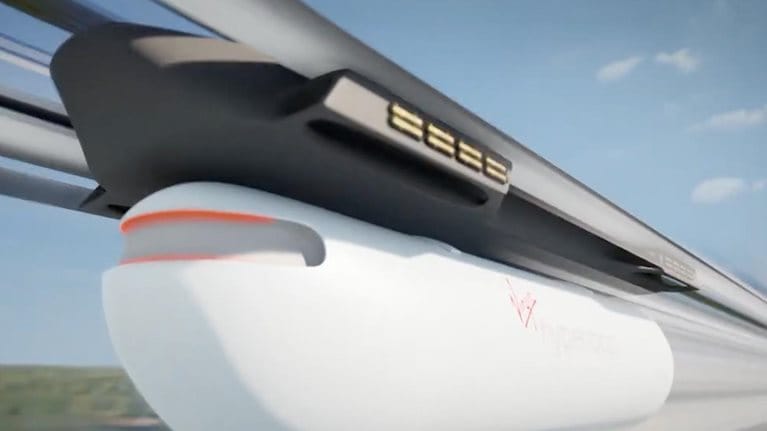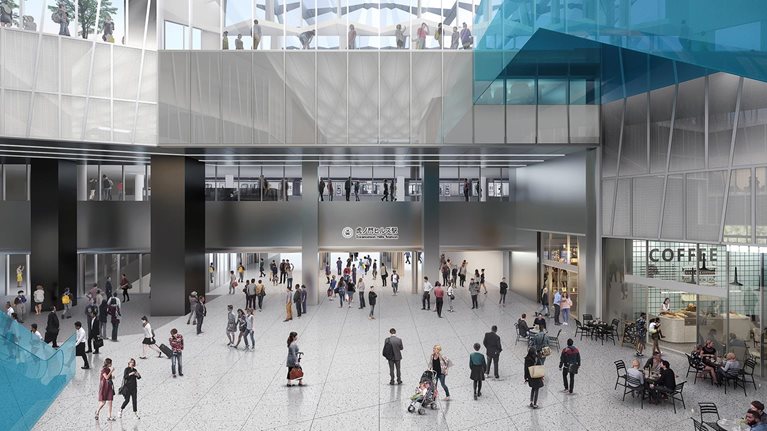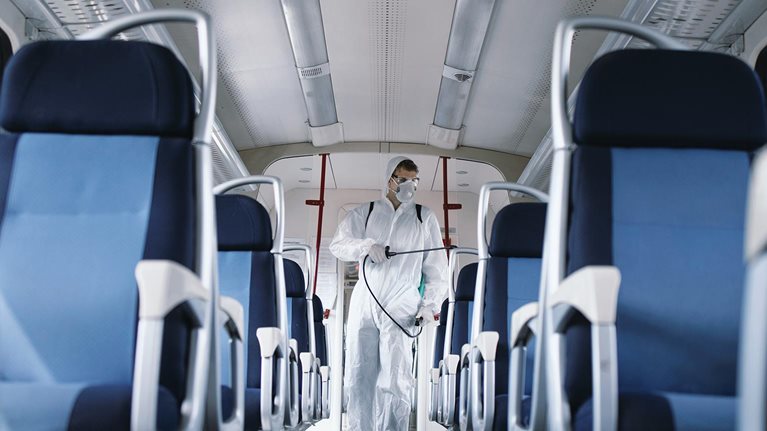Urban transit looks quite different today than it did before the COVID-19 pandemic. Open-air options, such as bikes and scooters, have grown in popularity while cities have had to suspend some bus and train routes. Cleanliness and safety have been top of mind for the riders who remain, though overall demand has diminished significantly. Where do we go from here? What will urban transit look like going forward? And what role will mobility as a service play? We spoke with David Reich, head of transit at Uber, and Chris Snyder, Europe CEO at Via, to get a sense of the future of urban transit from a technology perspective.
McKinsey: How have customer needs and preferences changed over the past year, and what will it take to meet customers’ urban transit expectations?
Chris Snyder: Amid pandemic mobility restrictions and a massive increase in the number of people working from home, the overall demand for commuter transit has plummeted. Not surprisingly, urban riders have also expressed a clear preference for transit modes that are perceived as safer: buses, with their open windows and smaller capacities, have fared better than subways.
At the same time, public microtransit services in both rural and urban communities have seen strong growth despite lockdowns.1 In fact, more than 70 percent of surveyed riders in rural Sevenoaks in the United Kingdom claim to have reduced their personal car use since the city’s on-demand transport service launched in early 2020.2 A similar service in Jersey City is now providing twice as many rides as it did prior to the pandemic, given its flexibility and the volume of low-income riders who’ve come to depend on the service to get to work and access essential services.3 And the bicycle “highways” of Berlin and London bear witness to the boom in popularity of open-air transit modes such as cycling.
Successful vaccination campaigns and a return to work, school, and social events may make safety concerns relatively short-lived. What will remain as the key challenge for public-transit providers is to attract riders back to the modes of mass transit they once relied on. Riders may soon be trading expectations of safety for expectations of convenience, efficiency, and reliability. For some agencies, this shift will require replanning their network in order to deliver service where it is most needed; for others, it will mean adopting new digitally enabled services to better serve post-COVID-19 ridership.
David Reich: When people decide to leave their homes to go anywhere, they’re taking into account many different factors at once. What are they optimizing for? Is it the fastest route to their destination? Is it cost? Is it comfort? But now, safety is number one for a lot of folks, and it’s important that transit recognizes that people need to feel secure in their travel. Security starts with keeping social-distancing standards up to date and focusing on cleanliness within transit. But it also extends to making sure people have all the information about their ride at their fingertips. If they’re going to take a multimodal trip, they need to know that the bus is going to show up when it’s supposed to. And if something goes wrong—if that bus breaks down—they need to know that there’s a backup plan.
During the pandemic, many transit agencies reduced or suspended service, and we were able to partner with cities to offer subsidized rides as a stopgap solution. In some cities, including Innisfil in Canada, Uber has actually been their entire form of public transportation. This arrangement has been a lifeline for some people, particularly in low-income areas and places where people did not have access to other means of transportation. It’s so important that we work together to offer new and innovative ways for people to get where they need to go.
McKinsey: What will be the defining features of urban transit in a post-COVID-19 world?
David Reich: Along with a continued focus on safety and reliability, I think resiliency is going to be a theme of the postpandemic world. Transit providers are going to need to bring a new mindset to how they set goals and think about user experience, harnessing technology to bring more dynamic and resilient options into their network.
Equity will also be a defining feature. Transit exists as a public service for everyone, but it’s often difficult to service sparsely populated areas and areas that tend to be lower-income. We did studies that showed that most Uber trips in the New York metropolitan area were within outer boroughs—communities that did not have access to rides from their doorstep previously. It might not be cost-effective to service such areas with a fixed-route bus, for instance.
By leveraging tools like rideshare and harnessing the multiple modes available to them, transit agencies in cost-effective ways will be able to serve vulnerable populations and paratransit markets that have been left behind by fixed-route public transportation. And by operating in a way that works for these communities, cities will change for the better.
Chris Snyder: Post-COVID-19 urban transit will be defined by the extent to which individual cities are able to embrace the opportunities—and the challenges—that life during COVID has revealed. This will likely manifest in the following shifts:
- A permanent redistribution of street space from cars to people, in the form of new sidewalks, bike lanes, and green spaces. The bicycle superhighways and shared streets of 2020 will become lasting fixtures of the urban landscape.
- New investments in public transport as systems move from a survival mentality to a growth and recovery mindset; attracting riders back to transit will be seen as a key enabler of economic recovery.
- A new focus on integrating digital technologies into public transit offerings. This move will both facilitate greater levels of trust and transparency among passengers—allowing them to understand, for instance, how full their bus is—and enable data-driven planning and operations, ultimately allowing for a more equitable distribution of transit access.
McKinsey: Where are the greatest opportunities for digital innovation to mount a distinctive mobility-as-a-service (MaaS) offering?
David Reich: I think MaaS has a ton of potential. And it’s important to recognize that it’s really nascent. By pulling different modes together and leveraging technology, both in terms of planning and operating their networks, transit agencies can provide a great user experience and make it easy for people to leave their cars at home—instead taking some combination of vehicles, including public transportation, to their destination.
Of course, it’s difficult because the same person could change their preferences for getting around the city multiple times within the same day. You want to have many different offerings that can work the way individual riders want at any point and optimize for their preferences—for instance, if they value time over cost or are willing to pay a bit more to save 20 minutes on the commute.
In order to bring the best digital innovations to market, we need many different MaaS providers competing. That way, multiple technology companies, transit agencies, and app providers can bring to market great user experiences and algorithms that string together multiple modes to provide riders with their best public and private travel options. On the regulatory and policy front, then, it’s important that we let innovations come to market—and even provide incentives for these innovations.
Chris Snyder: MaaS—which promises to put the entire universe of mobility at our fingertips by offering an exhaustive menu of travel options—has been overhyped, but thus far it has also underdelivered. After all, we are creatures of habit. Most of us find ourselves taking the same trips over and over again, despite there being faster or more efficient ways of reaching our destination depending on the time of day or immediate availability of various modes of transit.
The real promise of MaaS is not in providing 100 ways to make a trip but in identifying the two or three best choices—for instance, with one option prioritizing speed, another value, and another human-powered modes. And because almost every trip we take involves a combination of travel modes, such as walking and public transit—perhaps with a transfer in between—it’s clear that the value of a MaaS offering is in its ability to intelligently combine multiple travel modes into a single, integrated journey, rather than offering the simplistic choice of train, bike, or cab.
McKinsey: What trends in urban mobility are you most excited to see play out over the next five years?
Chris Snyder: One of the most consequential impacts of the COVID-19 pandemic on public transit will be the redesign of urban transit networks to address new travel patterns and to account for updated equity and accessibility goals. The potential to better serve urban and rural communities alike in the period of economic rebuilding is simply massive. In the past, network redesigns have typically happened once or twice a generation. But new digital planning tools make it possible for cities and transit agencies to make network planning an ongoing process, allowing transit to adapt far more fluidly to changing needs. The next five years will also see the first group of cities take steps to roundly reject the private car as a major component of urban mobility. Cities may do so by creating Barcelona-style “superblocks,” neighborhoods of nine blocks in which car traffic is limited to the outside roads; charging motorists significant congestion fees to enter city centers, as in London; or reorienting neighborhood development around the “15-minute city,” where everything a resident needs is accessible within 15 minutes on foot or bike—a model Paris is pursuing. This is a hugely promising trend that could signal one of the most fundamental reimaginings of urban life in 100 years.
David Reich: We see public transit’s role evolving to become mobility managers, orchestrating movement throughout their cities. That includes more modes of transportation, such as dockless scooters, e-bikes, rideshare, and microtransit, in addition to fixed-route public transportation like buses and subways. When you put all these modes together, you serve people better—getting people to work on time and providing vulnerable populations equal access to their cities. We are really excited about how technology can help to further that movement—analyzing and measuring movement throughout a city, seeing where it’s falling short, and then optimizing that.
Over the next five years, we’re also going to see more happening around autonomous vehicles. It’s going to be really interesting to watch this progression and see how they can help provide better transportation. And I am personally excited about the open streets, pedestrian thoroughfares, and bike lanes that have emerged through the pandemic; these are great for cities, and I hope to see them stick around.
Few moments in history have held so much potential for change. It’s going to be fun to watch that play out—and to have a role in making it happen.


